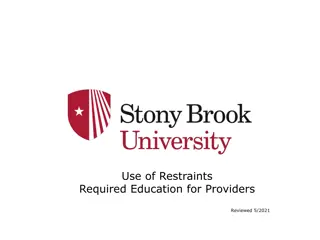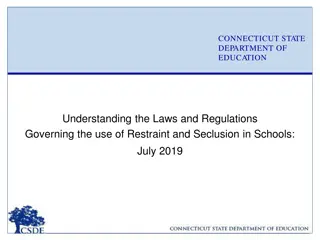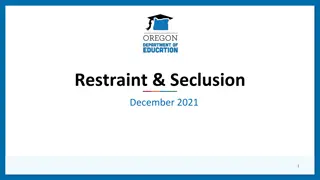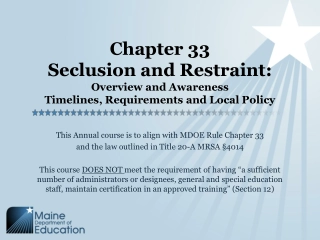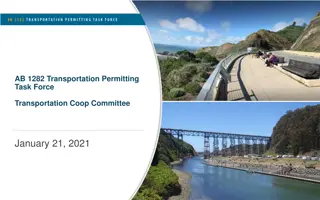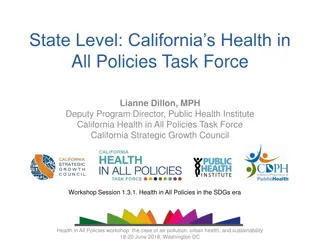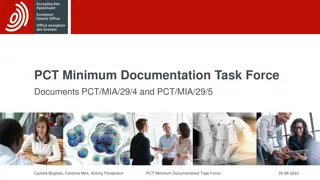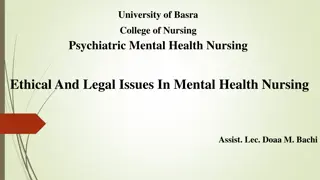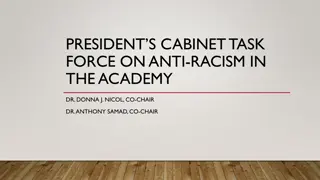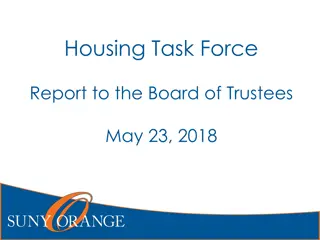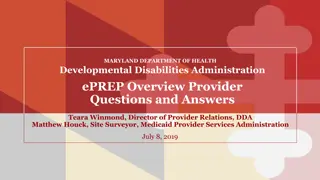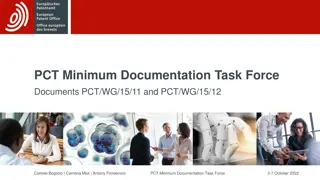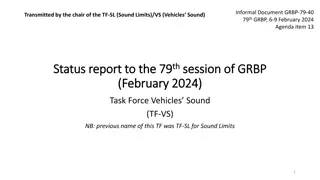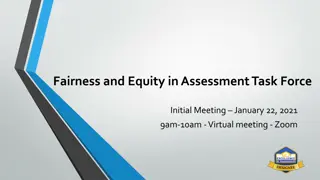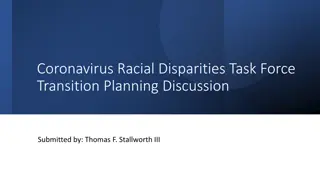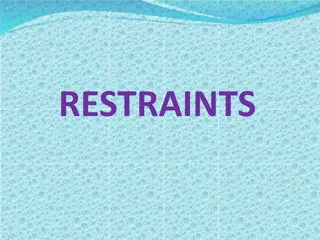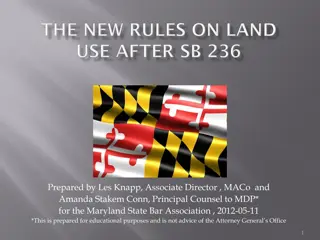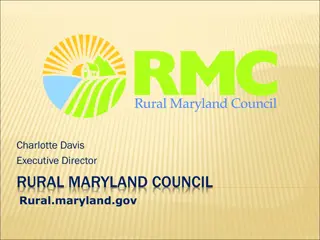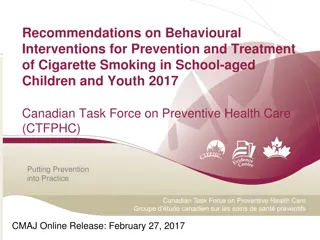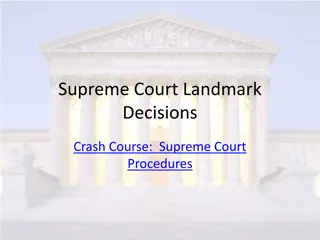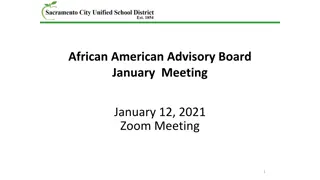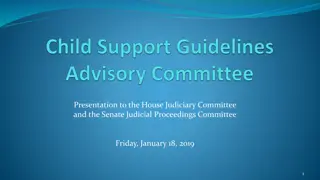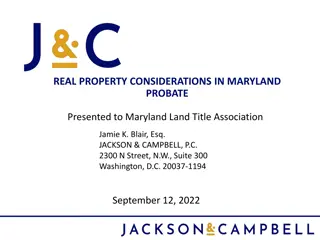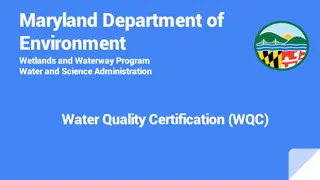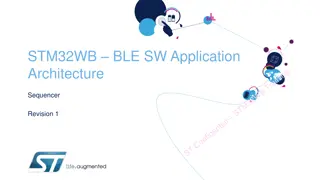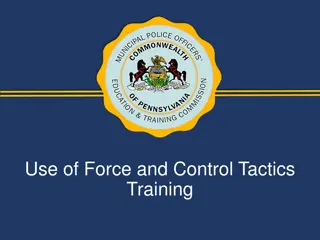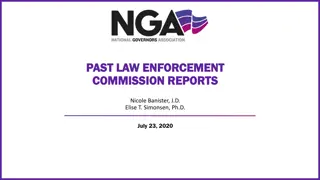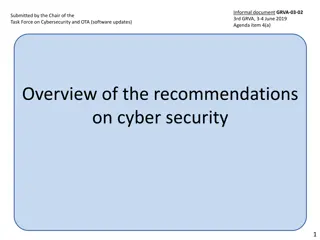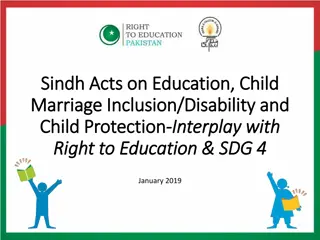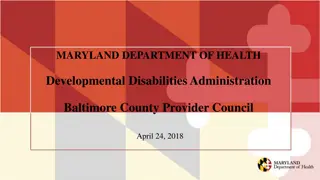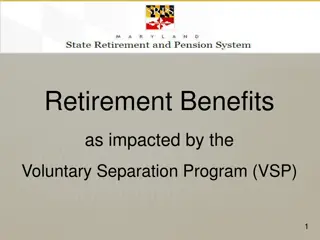Maryland State Department of Education Restraint and Seclusion Task Force Recommendations
The Maryland State Department of Education's Restraint and Seclusion Task Force convened meetings to address the use of restraint and seclusion in schools. The task force considered various aspects such as circumstances prohibiting restraint and seclusion, contraindications, training requirements, and policy development. Deliverables included a report with findings and recommendations, proposed regulations, and definitions of restraint types. The task force aimed to ensure student safety and better regulate these practices in educational settings.
Download Presentation

Please find below an Image/Link to download the presentation.
The content on the website is provided AS IS for your information and personal use only. It may not be sold, licensed, or shared on other websites without obtaining consent from the author. Download presentation by click this link. If you encounter any issues during the download, it is possible that the publisher has removed the file from their server.
E N D
Presentation Transcript
Maryland State Department of Education Restraint and Seclusion Task Force Meeting #1 SB 786 (2017)/Chapter 611 July 31, 2017
The Task Force on Restraint and Seclusion shall consider: 1. The circumstances under which, and the schools or types of schools in which, restraint and seclusion shall be prohibited; Meeting 1 Meeting 1 2. Contraindications for restraint and seclusion and who may authorize restraint and seclusion; Meeting 2 3. Definitions of positive behavioral supports , behavior interventions , and trauma informed interventions ; Meeting 2 4. Training requirements for school staff regarding behavioral interventions; Meeting 3 5. Minimum requirements for policies and procedures to be developed by local school systems, state operated programs, and nonpublic schools; and Meeting 4 6. Standards for monitoring compliance by local school systems, State operated programs, and nonpublic schools. 2
Deliverables: Report to the Maryland State Board of Education and the Maryland General Assembly Findings and recommendations Determination of circumstances in which seclusion may be used Types of doors and locking mechanisms Safety of rooms used for seclusion Requirements for observation Period of time for the use of seclusion Requirements for discontinuation of seclusion Changes that are needed to update regulations October 1, 2017 Proposed regulations for the State Board December 1, 2017 3
COMAR Definition of Restraint Restraint--The use of a physical or mechanical restraint. 4
COMAR Definition of Physical Restraint Physical Restraint--The use of physical force, without the use of any device or material that restricts the free movement of all or a portion of a student s body. Physical Restraint does not include: (i) briefly holding a student to calm or comfort the student; (ii) holding a student s hand or arm to escort the student safely from one area to another; (iii) moving a disruptive student who is unwilling to leave the area if other methods such as counseling have been unsuccessful; or (iv) intervening in a fight. 5
COMAR Definition of Mechanical Restraint Mechanical Restraint--Any device or material attached or adjacent to the student s body that restricts freedom of movement or normal access to any portion of the student s body and that the student cannot easily remove. Mechanical restraint does not include a protective or stabilizing device. 6
COMAR Definition of Seclusion Seclusion--The confinement of a student alone in a room from which the student is physically prevented from leaving. 7
Physical Restraint Code of Maryland Regulations When allowed Emergency - Necessary to prevent harm In Behavior Intervention Plan or in IEP If parents have provided written consent (for nondisabled student) Authorization and Implementation School personnel who are trained in appropriate use Only reasonable force as necessary to protect student or others from harm Removed as soon as student is calm and not more than 30 minutes Restrictions: School personnel MAY NOT: x Place a student face down x Position a student in a way that obstructs the airways x Obstruct staff member s view of the student s face x Restrict a student s ability to communicate distress 8
Seclusion Code of Maryland Regulations When allowed Emergency - Necessary to prevent harm after other interventions have failed In Behavior Intervention Plan or in IEP If parents have provided written consent (for nondisabled student) Authorization and Implementation School personnel who are trained in appropriate use Only reasonable force as necessary to protect student or others from harm Removed as soon as student is calm and not more than 30 minutes Restrictions: School personnel MAY NOT: x Place a student face down x Position a student in a way that obstructs the airways x Obstruct staff member s view of the student s face x Restrict a student s ability to communicate distress 9
Authorization for the Use of Restraint or Seclusion Student with a Disability If the IEP (Individualized Education Program) or behavior intervention plan does not include use or restraint or seclusion, the IEP team must meet within 10 business days. Student without a Disability Student must be referred immediately to pupil services team (student services team) or IEP. The team must consider the need for a functional behavioral assessment and development of a behavioral intervention plan. The IEP must specify circumstances for use of restraint or seclusion and how often the team will review. The IEP team must obtain written consent from parent if the team proposes inclusion of restraint or seclusion in the IEP. (Ed. Art. 8-405(f)) The school must obtain written consent of parents while a behavior intervention plan is developed. 10


